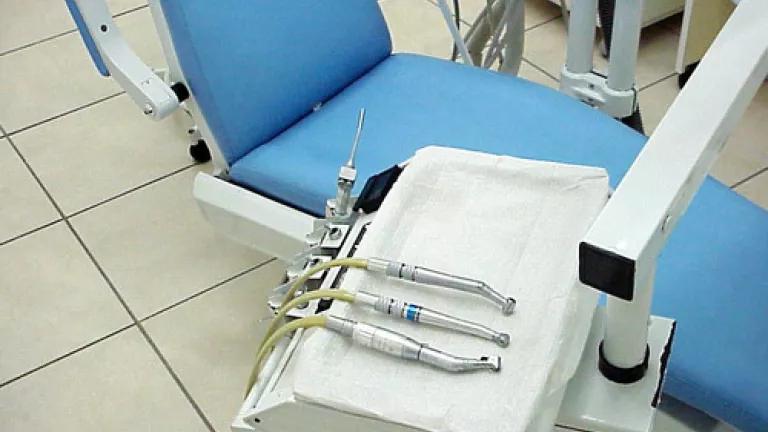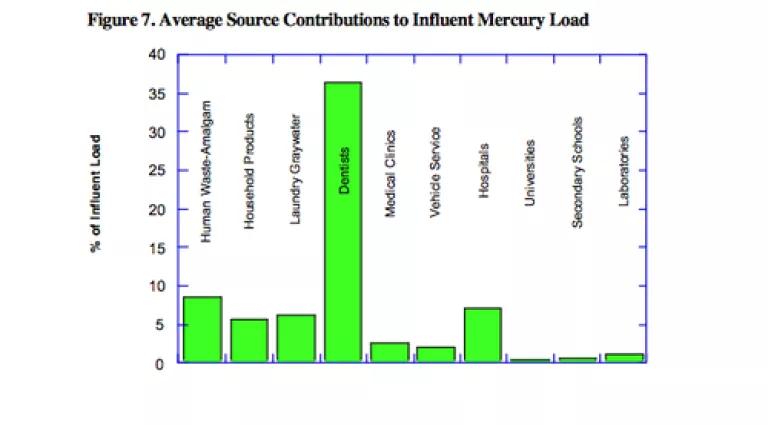
It looks like we got some good news from the Environmental Protection Agency today about the dentist. No, it won’t make the experience of going to the dentist any less stressful, but it will reduce the amount of mercury that enters our environment.
I’m sure many of us dread it: a visit to the dentist’s office. If you’re really lucky, a little scraping, some polishing, a couple of pokes here and there, and you’re done. If you’re less lucky (like I am), you have to endure the needles and drilling to get a cavity filled. Back in the day, mercury – or dental amalgam – was the go-to material for those fillings. You know, the dark grey stuff mashed into those poor teeth, which was half mercury, and a mix of other metals like silver and tin.
As hardy as they are, dental amalgam fillings don’t last forever. As they wear out, they are commonly being replaced by white composite fillings although some dentists still use amalgam.
Have you ever thought about what happens to that old dental amalgam or the leftover materials in new ones? As it turns out, once it gets sucked out of your mouth, or spit into that sink by the chair, or poured down the drain, it goes straight out to wastewater facilities. And one way or another, that dental amalgam – and all that mercury in it – goes into the environment.

Source: Final Report on Mercury Source Control & Pollution Prevention Program Evaluation, Association of Metropolitan Sewerage Agencies (AMSA), available at http://www.vce.org/mercury/amal/AMSA2002.pdf, p. 27, 2002.
Annually, approximately 4.4 tons of mercury from dental offices go into wastewater treatment facilities.
Elemental mercury from dental amalgam enters the environment through a variety of ways. Some of it is released into rivers and lakes from a wastewater treatment facility. Much of it is collected in the sewage sludge at the facility, and is released into the environment when it’s incinerated, placed in a landfill, or applied to land. Certain microorganisms can change mercury into methylmercury, a highly toxic form of mercury that contaminate fish and shellfish.
Mercury is a dangerous neurotoxin, so it is critically important to keep it out of our rivers, lakes, and streams. Every state in the nation has at least one body of water that carries a mercury fish consumption advisory. Therefore, finding a way to limit mercury coming from dental offices is a necessary step towards fighting mercury pollution.
As it turns out, there is a relatively simple and economical solution to the mercury coming from the dental offices. A piece of equipment called an amalgam separator removes dental amalgam from the water before it leaves the dentist’s office. After the amalgam is collected, then it can be stored, rather than released into the environment.
At least a dozen states, including Massachusetts, Connecticut, Maine, New Hampshire, Washington, Vermont, New York, Rhode Island, New Jersey, Oregon, and Michigan, mandate pollution control requirements to reduce mercury discharges from dental clinics through the use of amalgam separators and best management practices. Even the American Dental Association incorporates the use of amalgam separators in its Best Management Practices for dental amalgam.
But there are still a lot of dental offices around the country do not have amalgam separators installed. Which is why we welcome EPA’s proposed rule.
EPA's rule requires dental offices without separators to install ones that can remove at least 99% of the dental amalgam from the wastewater stream. Early adopters who already installed separators that achieve less efficiency (for example, only 95% removal) won’t be punished. They have 10 years to put in new equipment that achieves the 99% removal rate.
Overall, it looks like this proposal follows on the recommendations of the dental industry, is economical, and takes an important step in our fight to combat mercury pollution. All around - a good plan.
Now if they could do something about those drills.
* Apologies to my wonderful dentist, but it is still stressful.
